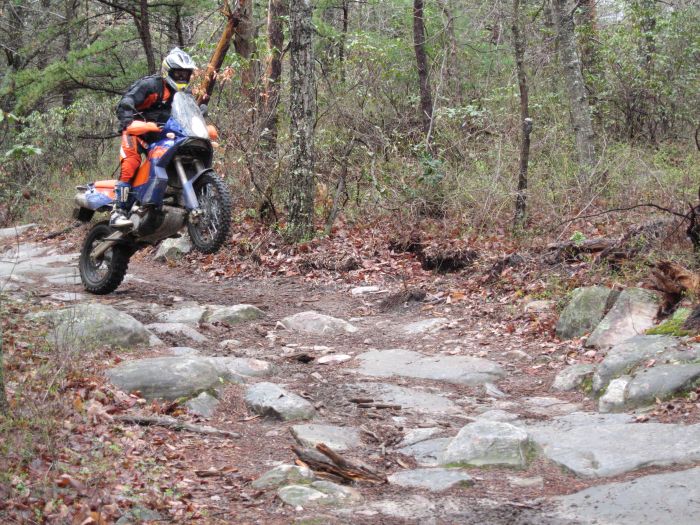Unfortunately, accidents do happen and if you or your riding partner breaks their leg on a ride out it’s worth knowing what the best course of action is. Doc Edwards talks us through what to do.
As adventure and rally riding is inherently dangerous, injuries are bound to occur. The best thing we can do to avoid injury is to work on prevention. A rider must be able to know what is ahead through the dust and make accurate judgements. Knowing when to ride a section conservatively or push forward is the real strategy for the Dakar rally or any adventure ride.
Imagine that you are riding up to the scene of a motorcycle accident on the trail. As with any accident, stop behind the rider, blocking the trail so others may know to stop and help. Take off your helmet, jacket and gloves. You notice the fallen rider holding his leg and moaning in pain.
First, observe the fallen rider and ask if he or she is all right. If you have a response, you know three essential things immediately: The rider, A, has an airway, B, is breathing, and C, has a pulse and adequate blood pressure. These are called the ABCs of emergency care.
Upon further inspection, you can see that the leg is visibly deformed and the thigh is swollen. This person likely has a broken leg. Assuming that you have limited medical experience, what should you do?
Proper management for a broken leg on the trail can be a stressful situation but easily managed if some basic steps are taken. Always call for emergency aid if possible and know the number depending on which country you are riding in (UK 999, USA 911, France 15).
Remove or cut away any clothing around the fracture site. Stop the bleeding if necessary by applying firm pressure with any towel, shirt or rag you have available until the bleeding stops. If the bone is protruding from the skin, take a deep breath, cover it and don’t touch it or attempt to twist it back in place. Very strong muscles hold a broken thigh bone in place making it difficult to provide traction. You can make an improvised splint using natural resources.
Get two forked branches or saplings at least 5cm in diameter. Measure one from the patient’s armpit to 20cm past the fracture site. Measure the other from the groin to 20cm past the fracture site. Then place an appropriately sized piece of wood under the two ends of the splints and attach them using string or tape. Other items that could be used as splint are a rolled-up newspaper, fender, or a motorcycle seat.

Doc Edwards himself
Reduce the swelling and prevent further injury. If available, place an ice pack or cold compress on the wound. Elevate the injured leg if possible, managing the pain and inflammation by giving ibuprofen or Tylenol (paracetamol). Wait for medical help to arrive, but sometimes you’ll have to be creative to get a person to safety.
Reassurance is very important for the mental well-being of the patient. Keeping a positive attitude and reinforcing that ‘it’s never as bad as it seems’ will surprisingly get you through many tough situations.
Who’s writing?
Johnathan (Doc) Edwards M.D. is a veteran physician for the KTM Red Bull Dakar rally team. His many duties include training and nutrition regimens for the riders, massage therapy, medical affairs, as well as translating French for the American rally team. Doc Edwards has extensive motorcycle racing background competing for many years on the US motocross circuits racing against the likes of Jeremy McGrath and Jeff Emig.
Johnathan suffered a knee injury, which exposed him to medicine and he then decided to pursue a career in it. During his medical career, he has completed training in anaesthesia, sports medicine, nutrition, massage and is fluent in the French language. Doc Edwards has completed five Dakar rallies as well as many adventure rides and has written a book called Chasing Dakar. He rides a KTM 640 Adventure motorcycle and continues to help aspiring rally racers prepare for the Dakar Rally.

